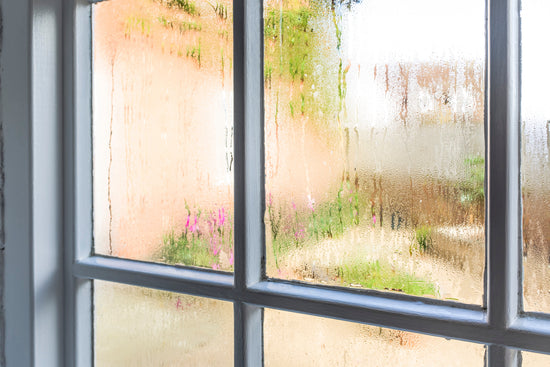What to Do If Your Pipes Freeze: A Quick Guide
As the temperature outside drops, the risk of your pipes freezing rises.
Not only can this be a huge pain, but it can also be very expensive! According to the Insurance Institute for Business & Home Safety, a burst pipe can cost upwards of $5,000 in water damage.
The good news is that it’s possible (and sometimes quite easy) to thaw a frozen pipe before it bursts! But you’ll need to act quickly. The longer your pipes are frozen, the more likely they are to burst and cause damage to your home.
There are also a few simple steps you can take to lower the chances of your pipes freezing in the first place.
Here’s everything you need to know about what to do if your pipes freeze:
Step #1: Locate the Frozen Pipes
As soon as you notice your pipes are frozen, it’s important to turn off the water supply to your home.
The reason is that it can be challenging to locate a frozen pipe, especially if it’s hidden in a wall. By shutting off your home’s water supply, you’ll give yourself more time to locate the pipe and dethaw it before it bursts or causes more issues.

For pipes that can actively be seen, such as those under sinks, you may be able to see frost that’s accumulated on the exterior of the pipe. This is a good sign that it's frozen, but you should also keep an eye out for any deformations or bulges in your pipes.
If you have access to the part of the frozen pipe, you can begin the thawing process (we’ll explain how to do this below!).
If you’re unable to locate the frozen pipe or pipes, it’s best to call a plumber as soon as possible.
Step #2: Thaw the Frozen Pipes
To thaw a frozen pipe, gradually apply heat from a hair dryer, heat lamp, or heat lamp.
You can also wrap the frozen pipes with thermostatically controlled heat tape, which will cost between $50-$200 depending on length.
As you thaw the pipes, it’s best to be ready with a mop, bucket, and towel in case there’s a leak!

There are a few risks you should be aware of when thawing a pipe:
First, never thaw a pipe using an open flame such as a propane torch or lighter. Not only can this damage the pipe, but it also presents a fire risk.
Second, when using a heat source to thaw a frozen pipe, it’s important to never leave it unattended.
Third, when you’re getting started with thawing, it’s important to begin closest to the faucet and slowly move further away. This will help prevent the pipe from bursting!
Step #3: If the Pipe Bursts
The good news is that not all freezing pipes burst. But if they do, it’s because water expands when it freezes, which adds a considerable amount of pressure to the pipes.
This pressure can cause small cracks and leaks to develop or, in the case of a burst pipe, a full-on flood in your home. If this happens, you should call a professional plumber immediately.
The good news is that if you followed our first step (shutting off your home’s water supply), you’ll have already minimized the amount of flooding and damage that can occur.

When waiting for the plumber to arrive, it’s a good idea to remove as much water as possible using mops, sponges, towels, and wet/dry vacuum. You can also run a dehumidifier.
This will minimize any mold, mildew, or other moisture-related issues from developing.

For messes that have caused damage to your home, it’s important to call your home insurance provider to file a claim. Luckily, most insurance companies cover burst pipes and related water damage.
Step #4: Call In the Pros
While we all wish we could DIY everything, sometimes it’s best to throw the white flag up and call in the pros.
If you’re unable to locate the frozen pipes or you aren’t comfortable thawing them yourself, it’s a good idea to book an appointment with a local plumber.

The cost of hiring a plumber can range from $45-$200/hour depending on where the pipes are located and how much damage has been caused.
It’s important to also make sure you hire a licensed and insured professional, or else it could end up costing you in the long run.
Step #5: Install a Monitoring System
Dealing with a frozen pipe can be really stressful. If you’re home and catch it in time, you minimize damage and repair costs. But if you’re out of the house or on vacation, your home could face significant water damage.
If you live in a colder climate that’s prone to sub-zero temperatures, we definitely recommend installing a Notion sensor that can detect a water leak as soon as it happens.

Your phone will receive a notification as soon as Notion detects flooding or leaking in your home, so you can quickly call in a plumber to deal with the problem!
This could save you thousands of dollars in-home repairs.
Bonus: How to Prevent Your Pipes From Freezing
Now that we’ve discussed what to do when a pipe freezes, let’s take a look at how to prevent your pipes from freezing in the first place.
First off, keep your heat on! While this can be expensive during the colder months, it’s a lot cheaper (and less stressful!) than dealing with a frozen or burst pipe.
For this, we recommend keeping the temperature in your home above 55° F.

This even goes for when you are away! It may seem intuitive to turn down the heat while you’re not home, but if the temperature dips outside, your pipes could be at risk.
For that extra peace of mind, you should consider installing a Notion temperature sensor in your home. When the sensor detects a change in temperature (if it gets too hot or too cold), you’ll receive an alert on your smartphone.

To help keep your home from losing heat, it’s a good idea to check on your insulation, especially in attics, basements, and crawl spaces. This will help prevent the temperature in those areas from dipping too low and unexposed pipes from freezing.
Lastly, for the pipes you have access to, it can be very helpful to wrap them with insulation. This can either come in the form of a foam or tape and can be easily found at your local hardware store.
That’s a wrap! We hope that these tips help you either unfreeze your pipes or prevent them from freezing!





